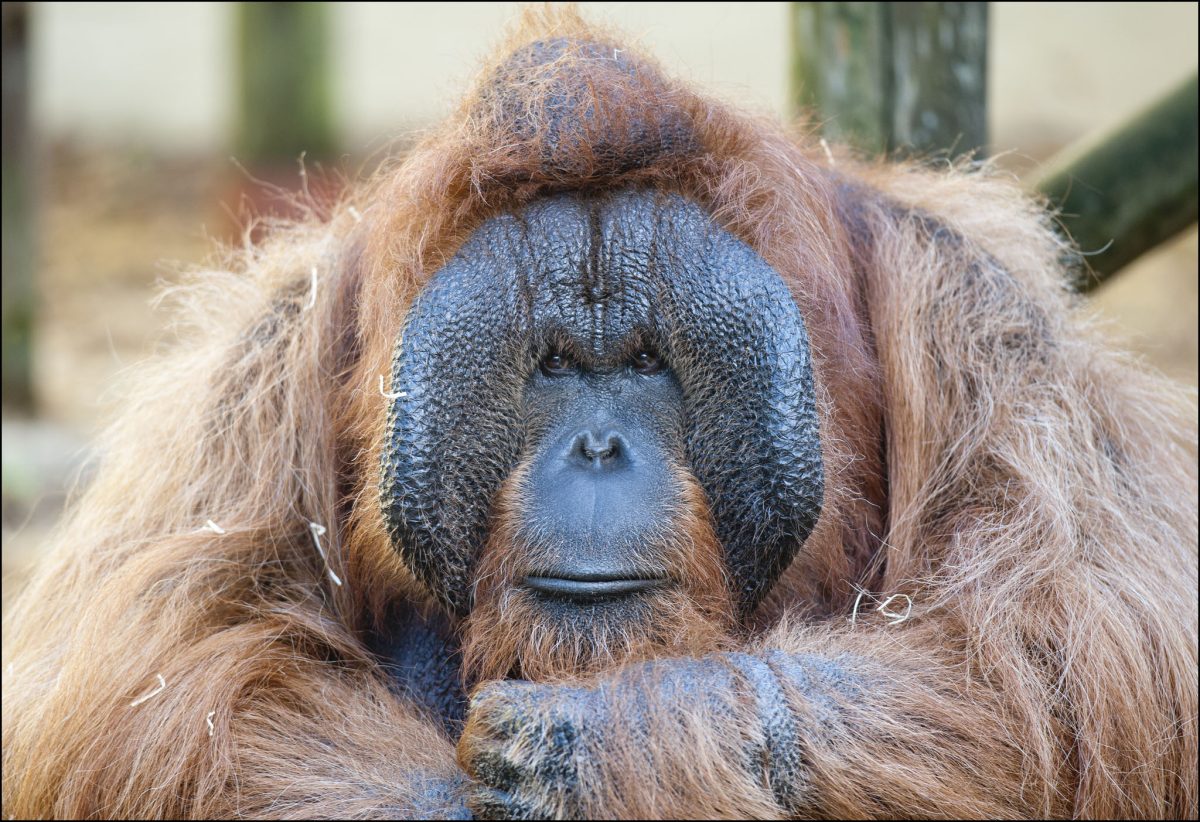IUCN Red List status: Critically Endangered
For more info on classifications, visit www.iucnredlist.org
Factfile
Where they live
Borneo
Habitat
rainforests
Size
length 1.25-1.5m., arm span 2.25m
Weight
males up to 90kg, females weigh between 30-50kg
Lifespan
35 years in the wild and up to 60 years in the zoo
Threats
The major reasons for their decline are the loss of tropical rain forest habitat through commercial logging and agricultural clearance to grow cash crops. The trade in illegally-captured baby orangutans is a further major threat and it is estimated that some 1,000 young have been captured in the last three years
Did you know...
- It is the only great ape to be found in Asia
- Fossil remains from mainland Asia show that some orangs were larger than gorillas
- Males have cheek pads to show their maturity and status
- Males also have large throat pouches which amplify their calls
More about orangutans...
The orangutan is not a monkey, but a great ape, like the chimpanzee and gorilla and, like them, lacks a tail and has long arms.
They are the most arboreal, or tree dwelling, of the great apes with only large adult males spending lengthy periods on the forest floor.
They are strictly day-active, spending the night in a tree-nest made from branches. They move through the branches using all four limbs.
They are the least social of the great apes with adults only associating with each other during the breeding season. Males have cheek pads, or flanges to show their maturity and status.
Sub-adult, or unflanged, males will try to mate with any female and will be successful around half the time.
Dominant, or flanged, males will call and advertise their position to females.
Following a gestation period of nine months females give birth.
The Bornean orangutan is the slowest breeding of all mammal species, with an interval of approximately eight years between births.
Newborn orangutans nurse every three to four hours, and begin to take soft food from their mothers’ lips by four months.
During the first year of its life, the young clings to its mother’s abdomen by entwining its fingers and gripping her fur.
A young orang is weaned at four years, and at around five years they will actively seek other young orangutans for play.
The Bornean orangutan is an omnivore with a diet which is composed of more than 400 types of food, including wild figs, eaves seeds and bark, plus birds eggs and insects.
How you can help...
Adopt a Orangutan (Bornean)!
Help prevent animals from becoming extinct by adopting an animal, you'll be supporting our zoo too!
Gold Adoption
Help support our zoo with a Gold adoption package with an additional zoo admission ticket, and personalised message displayed outside your adopted animalʼs enclosure.
£55.00
Find out moreSilver Adoption
Help support our zoo with a Silver adoption package it includes an adoption certificate, a zoo admission ticket and lots of zoo treats!
£41.50
Find out more











